| << Chapter < Page | Chapter >> Page > |
By the end of this section, you will be able to:
The information presented in this section supports the following AP® learning objectives and science practices:
You might expect that there are significant forces between current-carrying wires, since ordinary currents produce significant magnetic fields and these fields exert significant forces on ordinary currents. But you might not expect that the force between wires is used to define the ampere. It might also surprise you to learn that this force has something to do with why large circuit breakers burn up when they attempt to interrupt large currents.
The force between two long straight and parallel conductors separated by a distance can be found by applying what we have developed in preceding sections. [link] shows the wires, their currents, the fields they create, and the subsequent forces they exert on one another. Let us consider the field produced by wire 1 and the force it exerts on wire 2 (call the force ). The field due to at a distance is given to be
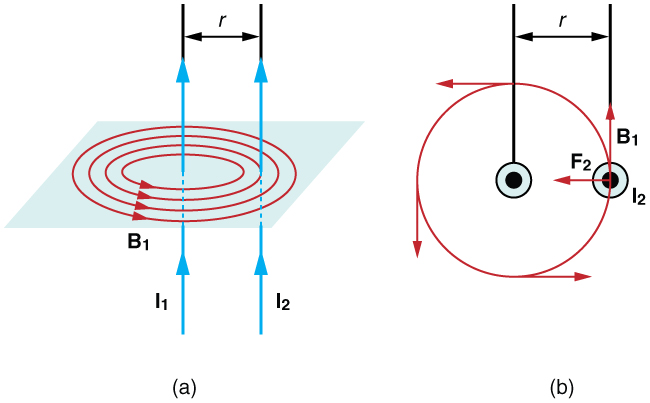
This field is uniform along wire 2 and perpendicular to it, and so the force it exerts on wire 2 is given by with :
By Newton’s third law, the forces on the wires are equal in magnitude, and so we just write for the magnitude of . (Note that .) Since the wires are very long, it is convenient to think in terms of , the force per unit length. Substituting the expression for into the last equation and rearranging terms gives
is the force per unit length between two parallel currents and separated by a distance . The force is attractive if the currents are in the same direction and repulsive if they are in opposite directions.
For two parallel wires, the fields will tend to cancel out in the area between the wires.
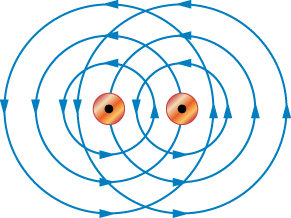
Note that the magnetic influence of the wire on the left-hand side extends beyond the wire on the right-hand side. To the right of both wires, the total magnetic field is directed toward the top of the page and is the result of the sum of the fields of both wires. Obviously, the closer wire has a greater effect on the overall magnetic field, but the more distant wire also contributes. One wire cannot block the magnetic field of another wire any more than a massive stone floor beneath you can block the gravitational field of the Earth.
Parallel wires with currents in the same direction attract, as you can see if we isolate the magnetic field lines of wire 2 influencing the current in wire 1. Right-hand rule 1 tells us the direction of the resulting magnetic force.
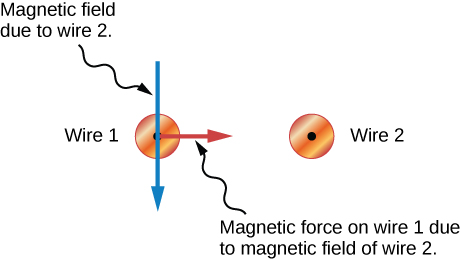
When the currents point in opposite directions as shown, the magnetic field in between the two wires is augmented. In the region outside of the two wires, along the horizontal line connecting the wires, the magnetic fields partially cancel.
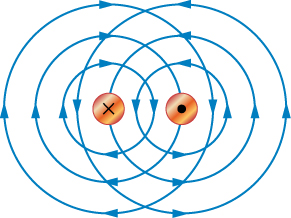
Parallel wires with currents in opposite directions repel, as you can see if we isolate the magnetic field lines of wire 2 influencing the current in wire 1. Right-hand rule 1 tells us the direction of the resulting magnetic force.
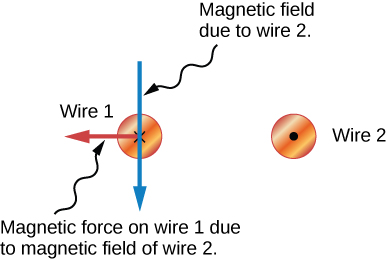

Notification Switch
Would you like to follow the 'College physics for ap® courses' conversation and receive update notifications?